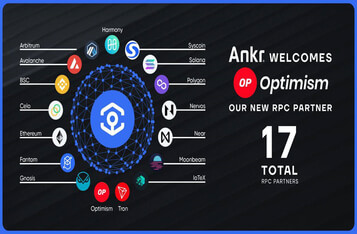Optimism introduces major updates to Fault Proofs, affecting withdrawal processes for bridges and exchanges on OP Mainnet and OP Sepolia.
Optimism (OP), a leading Layer 2 scaling solution for Ethereum, is set to implement significant breaking changes to its Fault Proof system, which will directly affect bridges, centralized exchanges, and custom solutions that handle withdrawals. This development is crucial for stakeholders within the Optimism ecosystem, as they must adapt their systems to align with the new withdrawal verification process.
Overview of the Fault Proof System Update
The upgrade introduces a shift from the L2OutputOracle to a new system comprising the OptimismPortal and DisputeGameFactory. The L2OutputOracle, previously essential for the Proposer role in storing L2 state output proposals, will be entirely removed. In its place, developers will need to use the rootClaim of a dispute game to prove withdrawals during the first step of the two-step withdrawal process.
The OptimismPortal contract will experience minor changes as it now references the DisputeGameFactory contract instead of the L2OutputOracle. Developers must now search for recent DisputeGame contracts with the appropriate game type through the OptimismPortal to prove withdrawals. This shift enhances the security and decentralization of the withdrawal process but requires developers to update their client code accordingly.
Impact on Bridges and Centralized Exchanges
The transition to Fault Proofs necessitates updates in the logic for handling withdrawals. Most teams leveraging the Optimism SDK or Viem will need to update their software versions prior to the Sepolia release. The Optimism SDK, for instance, requires an upgrade to version 3.2.0 or higher, which maintains API compatibility and integrates the new logic automatically once the Fault Proof upgrade is detected.
For those using Viem, the latest version breaks the API, necessitating the use of an experimental decorator supporting fault proofs. Upon fault proofs being mainstreamed on the Mainnet, a switch to the stable API will be recommended.
Monitoring System Changes
The Withdrawal Monitor and Dispute Monitor services have undergone updates to accommodate the new fault proof system. The Withdrawal Monitor service, crucial for the two-step withdrawal system, has become slightly slower at startup but more reliable and compatible with a broader range of infrastructure. It remains fully backward compatible with existing systems.
The Dispute Monitor service, on the other hand, will replace the current Fault Monitor to detect invalid output proposals. Teams currently running the Fault Monitor will need to switch to the new service and update their alerting systems to stay in compliance with the new upgrade.
Next Steps for Developers and Operators
Developers and operators within the Optimism network are advised to familiarize themselves with the upcoming changes by reviewing the detailed documentation provided by Optimism. This includes understanding the three main components of the Fault Proof System—Cannon FPVM and Mips.sol—and preparing their systems for the transition.
The Fault Proof updates are scheduled to launch on the testnet on March 19, 2024. It is crucial for all parties involved to prepare their systems in advance to ensure seamless integration with the new protocol and avoid any disruptions to their operations.
Optimism continues to provide developer support for those experiencing difficulties during the transition. The proactive engagement and detailed documentation reflect Optimism’s commitment to maintaining a robust and developer-friendly ecosystem.
Image source: Shutterstock
Credit: Source link
































